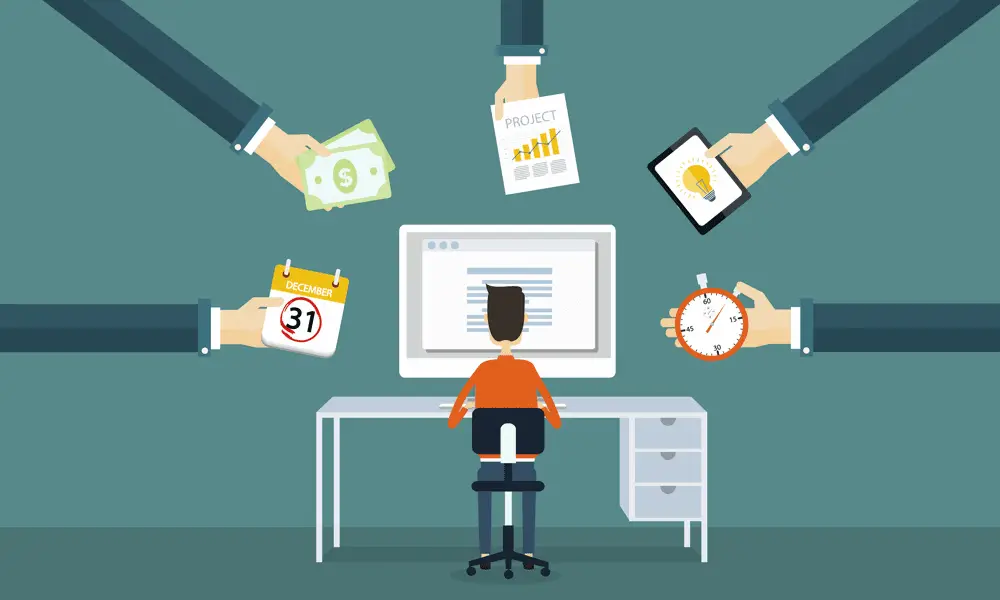In today’s digital age, blockchain technology has emerged as a game-changer, revolutionizing various sectors such as finance, healthcare, supply chain, and more. While the term ‘blockchain’ is often associated with cryptocurrencies like Bitcoin, its application extends far beyond. This article aims to demystify this complex yet fascinating technology, enabling beginners to gain a solid understanding of blockchain.
What is Blockchain Technology?
At its most basic level, blockchain is a type of database, but it differs from a traditional database in the way it stores information. Blockchain technology is a distributed ledger that records transactions across many computers in such a way that the registered transactions cannot be altered retroactively. This ensures the data’s transparency, security, and immutability.
The term ‘blockchain’ comes from its structure. When a transaction occurs, it is put into a ‘block’. Once the block is filled with a certain number of transactions, it is ‘chained’ to the previously filled block, creating a chain of such blocks. Hence, we have ‘blockchain’.
How Does Blockchain Work?
To understand how blockchain works, it’s crucial to familiarize yourself with some key terms:
- Nodes: Every participant in the blockchain network is a node. Each node has a full copy of the entire blockchain.
- Mining: This is the process by which transactions are verified and added to the blockchain. Miners solve complex mathematical problems to add blocks to the chain. In return, they receive cryptocurrency as a reward.
- Blocks: Each block contains multiple transactions. Once a block is filled with transactions, it is added to the chain.
Now, let’s dive into the step-by-step process of a blockchain transaction:
- Transaction Initiation: A participant initiates a transaction, which is then broadcasted to all the nodes in the network.
- Block Creation: The transaction is put into a block along with other pending transactions.
- Verification: Miners then work to verify the transactions within the block. They use powerful computers to solve complex mathematical problems.
- Block Addition: Once the problem is solved, the block is added to the chain. The transaction is now complete and cannot be altered or deleted.
This process repeats for every new transaction. It’s the distributed and decentralized nature of blockchain that ensures its security and transparency, making it a revolutionary technology in today’s digital age.
The Importance of Blockchain Technology
Blockchain technology is revolutionary because it brings about a high degree of transparency, immutability, and decentralization. This makes it almost impossible for data to be altered or tampered with once it has been written into the blockchain.
Numerous industries are recognizing the potential of blockchain technology. For instance, in the finance sector, blockchain can simplify and streamline payments and remittances, reducing the need for intermediaries. In supply chain management, blockchain can provide transparent and tamper-proof tracking of products from the manufacturer to the end customer. Similarly, the healthcare sector can use blockchain for secure and immutable patient records, ensuring data privacy while enhancing accessibility for authorized personnel.
Blockchain and Cryptocurrency
In the world of cryptocurrencies, blockchain technology plays a crucial role. Cryptocurrencies like Bitcoin and Ethereum operate on blockchain technology. Each transaction made with these cryptocurrencies is recorded onto the blockchain, providing a transparent and immutable record of all transactions.
This transparency ensures that all transactions can be traced, reducing the potential for fraudulent activities. Moreover, the decentralized nature of blockchain technology means that cryptocurrencies are not controlled by any central authority, giving users more control over their finances.
Future of Blockchain Technology
As we move into the future, the potential applications of blockchain technology are vast. Smart contracts, decentralized finance (DeFi), and secure voting systems are just a few examples of what is on the horizon. The increasing adoption of blockchain across various sectors signifies that understanding this technology will be crucial for many professionals.
The future of blockchain technology looks bright, with ongoing research and development aimed at overcoming current limitations and exploring new applications. The importance of learning and understanding blockchain technology cannot be overstated, as it continues to revolutionize the way we handle data and conduct transactions in the digital era.
To wrap it up,
Blockchain technology, with its potential for disruption and transformation, is undeniably a critical part of our digital future. Its fundamental features like transparency, immutability, and decentralization make it a revolutionary force in various sectors, from finance to healthcare and beyond.
In the realm of cryptocurrencies, blockchain is the underlying technology that ensures secure and transparent transactions, making it a cornerstone of the digital currency world.
As we look to the future, the potential applications and developments of blockchain technology are vast and exciting. It’s an area ripe for innovation and growth, and understanding it is increasingly becoming a necessity, not just for tech professionals, but for anyone who wants to thrive in the digital era.
The journey to understanding blockchain may seem daunting, but every step taken to learn and understand this technology is a step towards a more transparent, secure, and decentralized future. Continue exploring, learning, and adapting to this technology as it continues to shape our digital world.



















